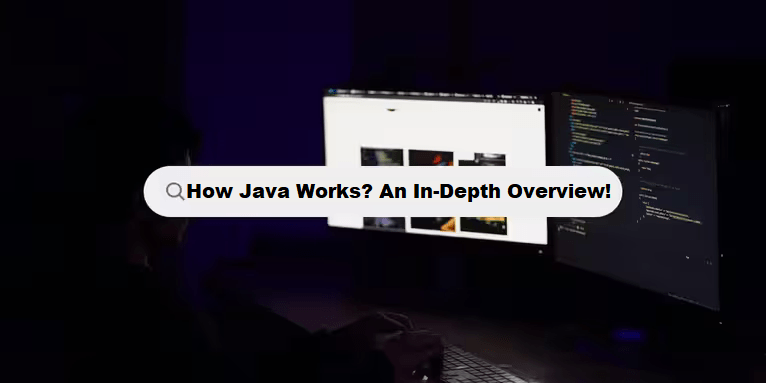Java is a high-level, object-oriented programming language that operates using the following key concepts and mechanisms:
1. Compilation and Interpretation
Java follows a two-step process to execute a program:
- Compilation: When you write a Java program, it is typically written in
.javasource code files. These source files are then compiled by the Java compiler (javac) into bytecode, which is stored in.classfiles. Bytecode is an intermediate form of code that is not specific to any particular computer or operating system. It is platform-independent. - Interpretation: When you run a Java program, the Java Virtual Machine (JVM) interprets this bytecode and executes it. The JVM is responsible for converting the bytecode into machine-specific code that the computer can execute.
2. Java Virtual Machine (JVM)
- The JVM is an engine that provides a runtime environment to execute Java bytecode. It ensures that Java programs are platform-independent. The JVM abstracts the underlying hardware and operating system, allowing the same Java program (compiled into bytecode) to run on any platform that has a JVM implementation (e.g., Windows, Linux, macOS).
- The JVM performs several functions like garbage collection (automatically managing memory) and providing security (by sandboxing code and managing access to system resources).
3. Java Development Kit (JDK) and Java Runtime Environment (JRE)
- JDK: The JDK is a software development kit used by developers to create Java applications. It contains the Java compiler (
javac), libraries, and tools for compiling, debugging, and executing Java programs. - JRE: The JRE provides a runtime environment for executing Java programs. It contains the JVM and the libraries required to run Java programs, but does not include the development tools (compiler and debugger) found in the JDK.
4. Garbage Collection
Java manages memory automatically through a process called garbage collection. The JVM periodically frees up memory used by objects that are no longer in use, preventing memory leaks and helping optimize performance.
5. Platform Independence
One of the most significant features of Java is its platform independence, often summarized by the phrase “write once, run anywhere”. The idea is that after you compile your Java code to bytecode, the program can be executed on any system that has a JVM, regardless of the operating system or hardware configuration. The JVM handles the specifics of the underlying system.
6. Object-Oriented Nature
Java is an object-oriented programming (OOP) language, which means:
- Classes and Objects: Java code is organized into classes that define objects. Objects represent real-world entities and contain data (fields) and behavior (methods).
- Encapsulation: Java allows hiding the internal state of objects and only exposing necessary operations, promoting modularity and security.
- Inheritance: Java supports inheritance, which allows you to create new classes based on existing ones, making code reuse possible.
- Polymorphism: Java supports polymorphism, allowing objects of different classes to be treated as objects of a common superclass.
- Abstraction: Java allows you to abstract complex systems and expose only essential features to the user.
7. Execution Flow
- When you execute a Java program, the following steps typically occur:
- The Java source code (
.javafiles) is compiled by thejavaccompiler into bytecode (.classfiles). - The JVM loads the bytecode files and executes them.
- The JVM uses the Just-In-Time (JIT) compiler to convert bytecode into native machine code just before execution for better performance.
- The Java source code (
8. Multithreading
Java supports multithreading, which allows programs to execute multiple threads concurrently, improving the efficiency of programs. This is useful for applications that require a high degree of concurrency or need to perform multiple tasks simultaneously (e.g., handling user input while running background tasks).
Review of Java Execution:
- Write Java code in a
.javafile. - Compile the Java code using
javacto produce bytecode (.classfile). - Run the bytecode on the JVM using the
javacommand. - The JVM interprets and executes the bytecode, performing necessary optimizations using JIT compilation.
This combination of compilation to bytecode and execution via the JVM ensures Java’s platform independence, security, and reliability across different systems.
Reducing Bugs with Coding Filters in Complex Applications!
Coding filters can help reduce bugs by simplifying complex application logic. When developers use filters to isolate specific tasks, they decrease the likelihood of errors caused by unhandled conditions or improper data handling. This leads to more stable applications with fewer issues.




